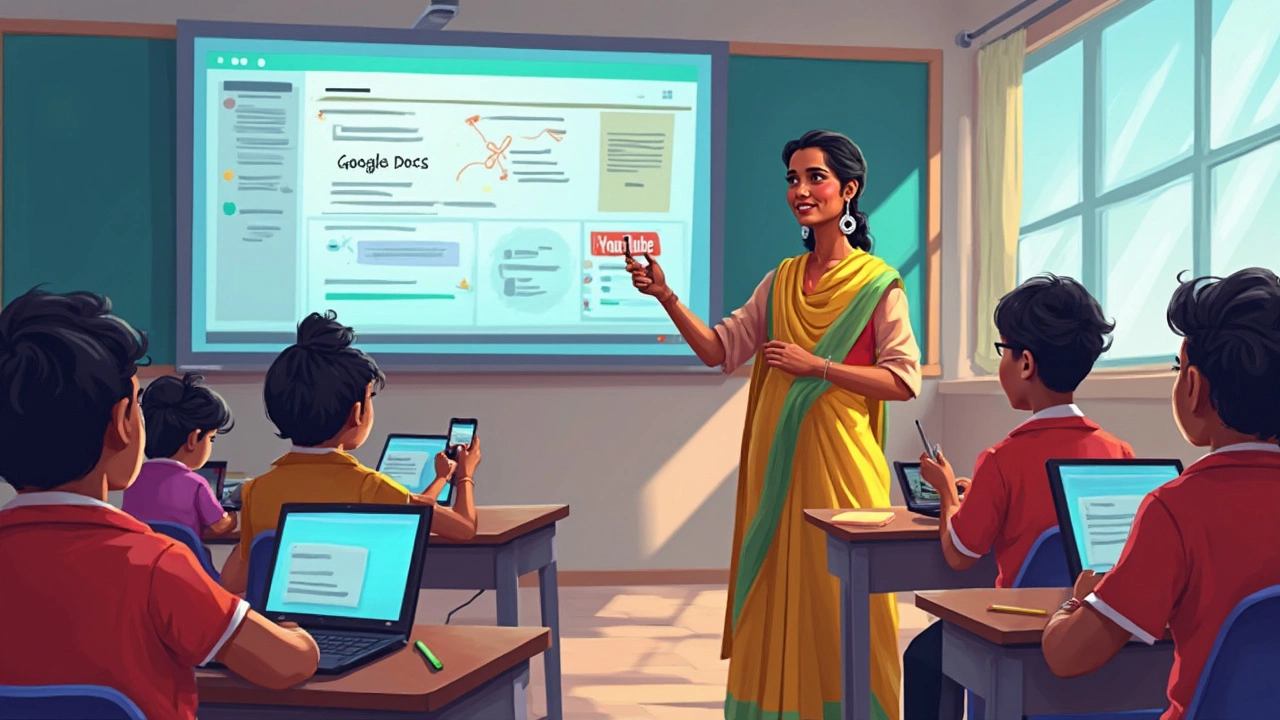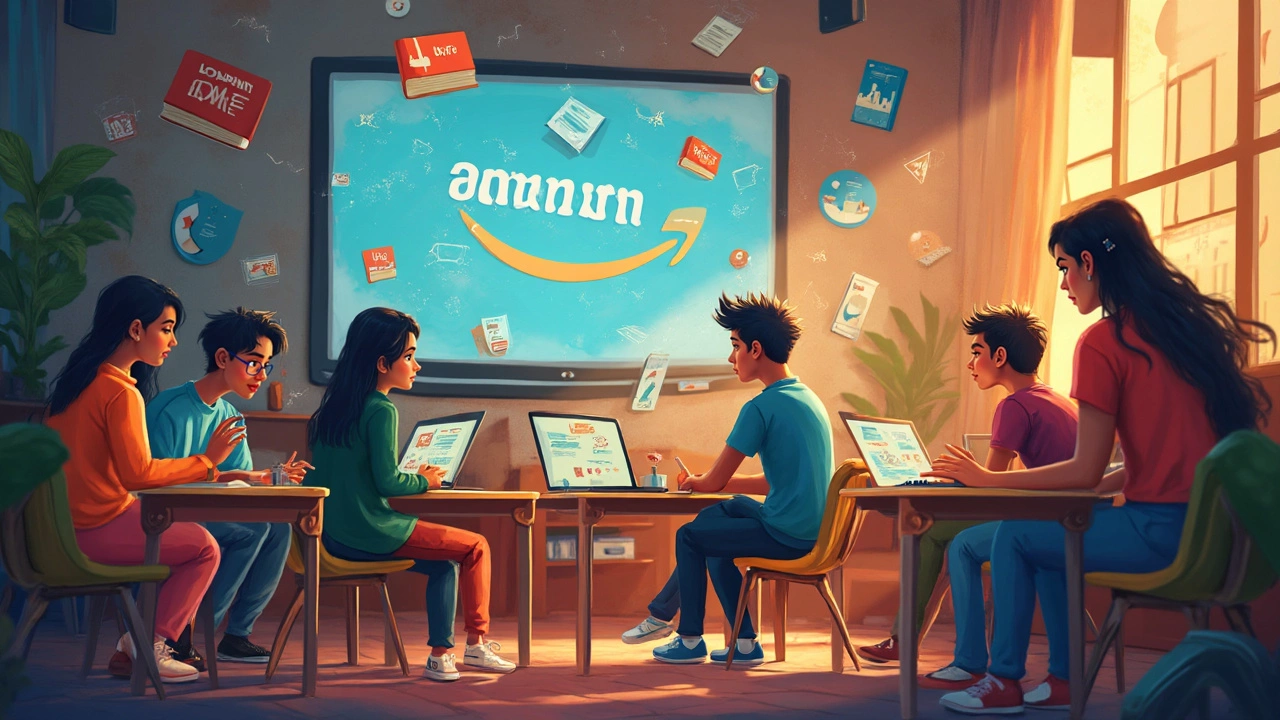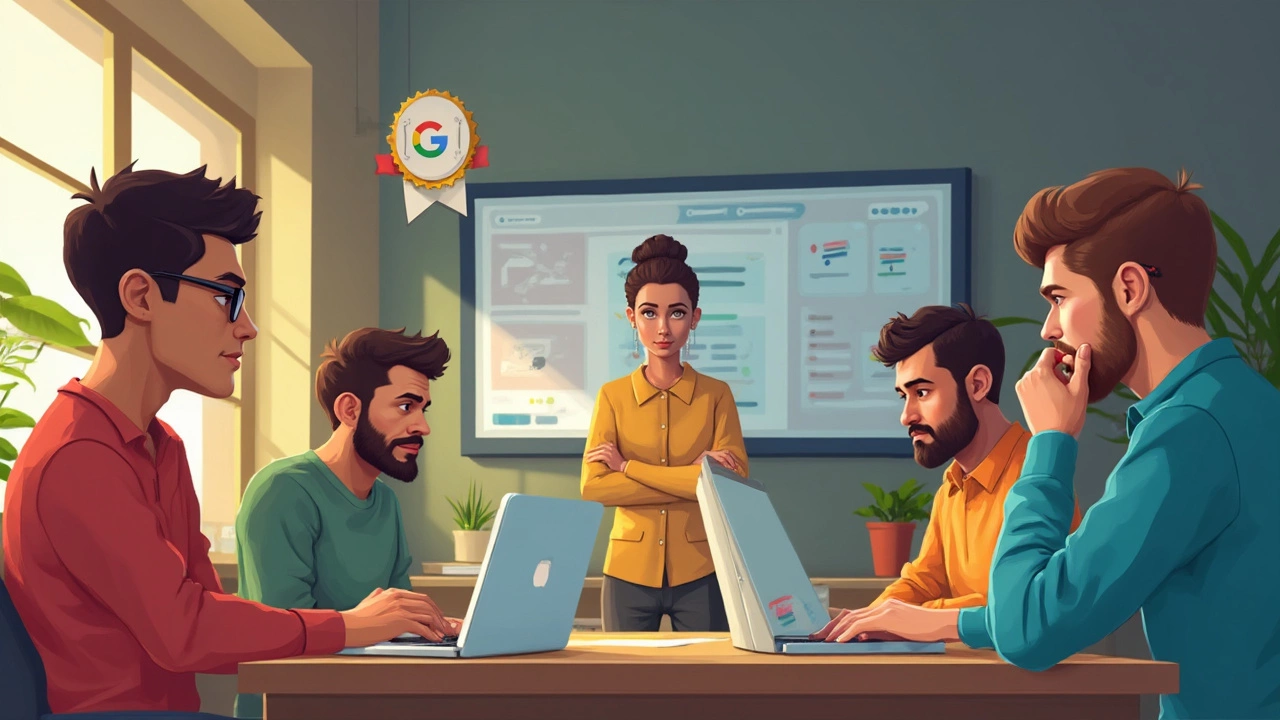Category: E Learning - Page 2
Is Google Classroom a Digital Platform? Real-World Answers for E-Learning
Google Classroom is often labeled as a digital platform, but what does that actually mean for teachers, students, and parents? This article breaks down what sets Google Classroom apart from other tools, how it really works, and why it’s become so popular in education. You'll also find surprising facts on how schools use it worldwide, along with tips to get more out of this platform. If you're curious about how Google Classroom fits into e-learning and whether it lives up to the hype, you’re in the right spot. Get straightforward, no-nonsense answers from someone who’s been knee-deep in the tech side of remote learning.
read moreCan I Do eLearning on My Phone? Your Handy Guide
Wondering if your phone is enough for eLearning? This article cuts through the hype and lays out what really works when studying online with just your mobile. Get a breakdown of pros and cons, tips to boost your study game, and honest advice on which apps actually help. You'll learn about tricks for making any small screen work for learning, plus real-life hacks to avoid burnout and distractions. Ready to turn your phone into a study tool?
read moreIs Netflix a Digital Platform? Breaking Down Its Place in E-Learning
This article digs into whether Netflix qualifies as a digital platform, especially when compared to platforms used for online learning. It takes a closer look at how Netflix works, highlights what makes up a true e-learning platform, and checks where Netflix fits in this digital world. You'll find real examples, odd facts, and advice on using streaming for your studies. It's a must-read if you're curious about learning outside boring classrooms. Learn what sets Netflix apart and why you might want to look elsewhere if you need serious online courses.
read moreIs Google an E-Learning Platform? The Facts Everyone Gets Wrong
People often wonder if Google counts as an e-learning platform, especially after the rise of Google Classroom and all its online tools. This article breaks down what makes something an actual e-learning platform and dives into how Google fits into the big picture. You'll see where Google shines, where it falls short, and what this means for teachers, students, or anyone learning online. Get ready for some practical tips on using Google for your own learning. You'll never look at Google Docs or YouTube the same way again.
read moreWhich Educational App Is Totally Free? The Truth About E-Learning Platforms
Many people assume all educational apps cost money, but that's not always true. Some platforms genuinely offer free courses with no sneaky fees or paywalls. This article looks into which popular educational apps are actually 100% free and what you get with them. You’ll see some hidden gems, tips for getting more value, and things to watch out for. Don’t waste time on half-free apps when you can learn everything you want without spending a rupee.
read moreIs Amazon a Digital Platform? A Deep Dive into E-Learning Connections
Wondering if Amazon counts as a digital platform? This article unpacks Amazon's huge footprint online and explores whether it fits into the world of e-learning. We look at how Amazon operates, what makes a digital platform, and where Amazon blends into e-learning spaces. Get clear answers, real facts, and useful tips to see Amazon's role in modern education tech.
read moreOnline Teaching Pays: Highest Earning E-Learning Platforms
Ever wondered where online teachers actually make the best money? This guide breaks down the top-paying e-learning platforms, what they pay, and the real perks and caveats. Get the scoop on what subjects and niches bring in the highest payouts and where experience pays off. You'll also find tips on boosting your rates and protecting your income in a quickly changing market. Real numbers, honest advice, and no fluff—just what you need to get paid more for your knowledge.
read moreGoogle Certificate: Do People Really Get Hired After Completing One?
Thinking about a Google certificate and wondering if it actually helps land a job? This article breaks down real hiring stories, looks at how employers see online certificates, and shares practical tips on making your credential stand out. Find out which industries pay attention to these programs and what else you can do to improve your job search. From tech to project management, here’s what really happens when Google cert shows up on your resume. You’ll learn what helps people get hired—and what doesn’t.
read moreWhat is the Biggest Learning Platform? Unpacking Where the World Learns Most
With hundreds of online learning sites out there, finding the biggest platform can be tricky. This article breaks down what actually makes a learning platform 'big,' and which platform stands out today. We'll look at features, numbers, and real-world impact. Plus, you'll get tips on how to get the most from whichever site you choose. If you want less hype and more honest insights on e-learning giants, you're in the right place.
read moreWhat’s Taking Over from SCORM in E-Learning?
As e-learning evolves, discovering efficient alternatives to SCORM is crucial for educators and developers. This article explores technologies like xAPI and LTI that provide more flexibility and modern capabilities. We also delve into how these innovations could enhance learning management systems and address SCORM's limitations. Gain insights into choosing the right path for future-ready e-learning.
read moreDiscover the Three P's of eLearning for Success
Explore the three essential P's of eLearning: Personalization, Practicality, and Participation. These principles are key to enhancing online education experiences. Learn how each aspect contributes to successful and engaging eLearning environments.
read moreAre Virtual and eLearning the Same? Exploring Key Differences
Virtual learning and eLearning are often confused, but they have distinct characteristics. Virtual learning typically involves real-time, interactive experiences similar to a classroom setup, often using tools like video conferencing. eLearning, on the other hand, is usually self-paced, involving pre-recorded lectures and online assignments that can be accessed any time. Understanding these differences can help you choose the right method based on your learning style and needs.
read more










